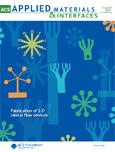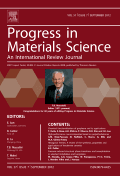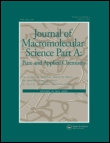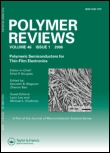
MATERIALS LETTERS
Scope & Guideline
Delivering concise discoveries in materials science.
Introduction
Aims and Scopes
- Innovative Materials Development:
The journal prioritizes the creation and exploration of novel materials, including polymers, composites, and nanomaterials, with tailored properties for specific applications. - Materials Characterization Techniques:
MATERIALS LETTERS emphasizes the use of advanced characterization techniques to analyze material properties and behaviors, ensuring thorough understanding and quality assurance. - Applications in Energy and Sustainability:
Research focused on energy-related materials, such as batteries, solar cells, and catalysts, is a significant area of interest, particularly those contributing to sustainability and environmental preservation. - Interdisciplinary Approaches:
The journal encourages interdisciplinary research that merges concepts and techniques from chemistry, physics, engineering, and biology to solve complex materials challenges. - Functional Materials for Biomedical Applications:
There is a strong emphasis on materials that have biomedical applications, including drug delivery systems, biosensors, and tissue engineering scaffolds.
Trending and Emerging
- Sustainable and Green Materials:
Research focusing on environmentally friendly materials and processes is gaining traction, driven by the urgent need for sustainable solutions in various industries. - Advanced Energy Storage Solutions:
There is a growing interest in innovative materials for energy storage applications, particularly next-generation batteries and supercapacitors, which are essential for renewable energy integration. - Hybrid and Composite Materials:
The development of hybrid materials that combine different classes of materials, such as polymers with nanomaterials, is trending as a way to enhance functionality and performance. - Smart and Responsive Materials:
Materials that exhibit responsive behaviors to external stimuli (e.g., temperature, light, pH) are increasingly popular, with applications ranging from sensors to actuators. - Machine Learning in Materials Science:
The application of machine learning and artificial intelligence in materials discovery and optimization is becoming a prominent theme, facilitating more efficient research and development.
Declining or Waning
- Traditional Bulk Materials:
Research focused on conventional bulk materials with limited functionality is becoming less prevalent, as the field shifts towards advanced and multifunctional materials. - Single-Use Materials:
There is a noticeable decline in studies centered around single-use materials, as the emphasis on sustainability drives research towards recyclable or biodegradable alternatives. - Basic Theoretical Studies:
Although theoretical studies remain important, there seems to be a waning focus on purely theoretical materials research without experimental validation, as the journal increasingly favors studies with practical applications. - Low-Performance Catalysts:
Research on low-performance catalysts is decreasing as the field rapidly evolves towards high-performance, efficient catalytic systems, particularly in energy conversion and environmental remediation.
Similar Journals

Materials Advances
Pioneering Breakthroughs in Open Access ScienceMaterials Advances, published by the Royal Society of Chemistry, serves as a premier open-access journal dedicated to the dynamic field of materials science and chemistry. Since its inception in 2020, the journal has quickly gained recognition, achieving an impressive Q1 ranking in both the Chemistry (miscellaneous) and Materials Science (miscellaneous) categories as of 2023. With an impact factor reflective of its high academic standards, it ranks #18 out of 111 in Chemistry and #107 out of 463 in General Materials Science per Scopus metrics. The journal welcomes research articles that explore innovative materials, advanced synthesis techniques, and novel applications, thereby contributing to the ongoing dialogue in materials research. Operating under an open access model, Materials Advances ensures that groundbreaking research is freely available to a global audience, facilitating collaboration and advancements in science. With its headquarters in Cambridge, England, this journal is positioned at the forefront of technological research and discovery, making it a vital resource for researchers, professionals, and students alike.

ACS Applied Materials & Interfaces
Advancing the Frontiers of Applied Materials and InterfacesACS Applied Materials & Interfaces, published by the American Chemical Society, stands as a leading journal in the field of applied materials, nanotechnology, and interdisciplinary research in medicine. With an impressive Impact Factor that places it in the Q1 category across Materials Science, Medicine, and Nanoscience and Nanotechnology, this journal consistently ranks among the top tier, evidencing its significance and influence in advancing scientific knowledge. The journal’s scopus ranking of 33 out of 463 in General Materials Science further underscores its critical role in disseminating innovative and high-quality research. Although it is not an open-access journal, a diverse range of access options is available, ensuring that vital research findings are accessible to a broad audience of researchers, professionals, and students. Targeting breakthroughs in the synthesis, characterization, and application of materials and interfaces, ACS Applied Materials & Interfaces serves as a pivotal platform for publishing cutting-edge studies essential for future technological advancements.

Advanced Materials Interfaces
Elevating Materials Science through Open Access InsightsAdvanced Materials Interfaces is a premier journal dedicated to the exploration and advancement of materials science, with particular emphasis on the interfacial phenomena that govern the behavior of materials in various engineering applications. Published by WILEY in the United Kingdom, this Open Access journal, established in 2014, has quickly ascended to a Q1 category ranking in both Mechanical Engineering and Mechanics of Materials as of 2023, reflecting its significant influence and excellence in the field. With impressive Scopus Ranks, such as #81 out of 672 in Mechanical Engineering and #58 out of 398 in Mechanics of Materials, it serves as a vital resource for researchers and practitioners aiming to push the boundaries of materials innovation. The journal provides unrestricted access to its cutting-edge research, promoting collaboration and dissemination of knowledge among the global scientific community, solidifying its role as a vital contributor to the ever-evolving landscape of materials engineering.

DESIGNED MONOMERS AND POLYMERS
Pioneering research for real-world polymer applications.Designed Monomers and Polymers is a prestigious open-access journal published by Taylor & Francis Ltd, dedicated to advancing the field of chemical and material sciences. Since its inception in 1998, the journal has provided a vital platform for disseminating innovative research on the synthesis and applications of monomers and polymers. With a current impact factor reflecting its growing relevance, it falls within the Q3 category across multiple domains, including Chemical Engineering, Chemistry, and Materials Science, making it a valuable resource for researchers and professionals seeking to stay at the forefront of material innovation. Operating from the United Kingdom, the journal emphasizes accessibility, having adopted an Open Access model since 2016, allowing wider distribution and utilization of its published content. Researchers, students, and industry professionals are encouraged to explore its comprehensive articles that contribute to the ongoing dialogue in polymer science, fostering advancements that can lead to real-world applications and technological progression.

IRANIAN POLYMER JOURNAL
Connecting Scholars in Chemical Engineering and PolymersWelcome to the Iranian Polymer Journal, an esteemed publication encompassing a rich history since its inception in 1996 and extending its scholarly reach up to 2024. Published by Springer from Switzerland, this journal stands out in the fields of Chemical Engineering, Materials Chemistry, and Polymers and Plastics, proudly holding a Q2 category ranking in each of these disciplines for 2023. With an ISSN of 1026-1265 and an E-ISSN of 1735-5265, the journal serves as a vital resource for researchers, professionals, and students, offering insights into polymer science and interdisciplinary applications. Although not an open-access journal, it presents an invaluable platform for high-quality research dissemination and robust peer-reviewed articles. With Scopus rankings indicating its respected position within the academic community, the Iranian Polymer Journal is committed to advancing knowledge and fostering innovation in polymer-related studies, making it an essential addition to your research library.

PROGRESS IN MATERIALS SCIENCE
Transforming Ideas into Material SolutionsPROGRESS IN MATERIALS SCIENCE is an esteemed peer-reviewed journal published by Pergamon-Elsevier Science Ltd, focusing on pioneering advancements and comprehensive studies in the field of Materials Science. With an ISSN of 0079-6425 and an E-ISSN of 1873-2208, this journal boasts a prestigious status, ranking in the Q1 category for Materials Science (miscellaneous) and achieving a remarkable 99th percentile in Scopus rankings, positioned 4th out of 463 journals in General Materials Science. Published from the United Kingdom, PROGRESS IN MATERIALS SCIENCE provides critical insights into the latest discoveries, trends, and methodologies shaping the materials science landscape, making it an invaluable resource for researchers, professionals, and students alike. Readers can explore rich content on subjects ranging from nanomaterials to biomaterials and beyond, all designed to foster innovation and knowledge dissemination in the materials science community. Although it is not an open-access journal, it remains a pivotal platform for high-quality research and essential discourse in this dynamic field.

ACS Macro Letters
Connecting Chemists to Shape the Future of ScienceACS Macro Letters, published by the American Chemical Society, is a leading journal in the fields of Inorganic Chemistry, Materials Chemistry, Organic Chemistry, and Polymers and Plastics. Established in 2012, this journal has swiftly ascended to the forefront of chemical research with an impressive reputation, as evidenced by its 2023 Scopus rankings placing it in the first quartile across multiple categories. The journal's objective is to disseminate timely and concise articles that advance the study of macromolecules and their applications, making it an essential resource for researchers, professionals, and students alike. With a focus on fostering innovation and facilitating collaboration within the chemical community, ACS Macro Letters presents a robust platform for scientists to share their groundbreaking findings. Being based in the United States, it serves as a central hub for global discourse in the chemical sciences, although it does not currently offer Open Access options. The journal's commitment to high-quality content is further underscored by its prestigious impact factor and acceptance into elite academic quartiles, signifying its influence and importance in shaping future research.

Journal of Optoelectronic and Biomedical Materials
Pioneering Research at the Intersection of Light and LifeJournal of Optoelectronic and Biomedical Materials (ISSN: 2066-0049) is a peer-reviewed academic journal published by the renowned VIRTUAL INSTITUTE OF PHYSICS, dedicated to advancing research in the interdisciplinary fields of optoelectronics and biomedical materials. This journal aims to provide a platform for researchers, professionals, and students to disseminate their findings on innovative materials and technologies that harness optical and electronic properties for biomedical applications. With an increasing significance in medical diagnostics, therapeutic approaches, and advanced materials science, the Journal of Optoelectronic and Biomedical Materials underscores the importance of facilitating collaboration among scientists from diverse fields. While currently operating under a traditional access model, the journal aspires to enhance global accessibility to cutting-edge research contributions that will drive the future of technology in healthcare and biotechnology. As a growing reference point in its domain, it encourages submissions that can advance these crucial scientific areas.

Journal of Macromolecular Science Part A-Pure and Applied Chemistry
Fostering Global Collaboration in Macromolecular ResearchWelcome to the Journal of Macromolecular Science Part A - Pure and Applied Chemistry, a distinguished publication dedicated to advancing the understanding of macromolecular science, encompassing critical areas such as polymers, materials chemistry, and composites. Published by Taylor & Francis Inc, this journal has firmly established its place within the scientific community, evident from its ranking in the Q2 and Q3 quartiles across various categories in the latest assessments, including Polymers and Plastics as well as Ceramics and Composites. With a commitment to providing high-quality peer-reviewed content, the journal aims to facilitate knowledge exchange and innovation among researchers and practitioners from around the globe. The absence of open access underscores the journal's commitment to maintaining rigorous editorial standards while remaining accessible to its readership. As the journal converges through valuable research contributions from 1992 to 2024, it continues to be a pivotal resource for professionals and students seeking to explore the latest advancements and applications in the field of macromolecular science.

Polymer Reviews
Advancing the frontiers of polymer science.Polymer Reviews, published by Taylor & Francis Inc, is an esteemed journal dedicated to the intricate and evolving field of polymer science. With its ISSN 1558-3724 and E-ISSN 1558-3716, the journal has established a significant presence among researchers and practitioners alike, evidenced by its impressive categorization in the Q1 quartiles across multiple disciplines, including Biomedical Engineering, Materials Chemistry, and Renewable Energy. Since its inception in 2006 and continuing through 2024, Polymer Reviews has consistently aimed to advance the knowledge base of polymer applications and innovations, providing a platform for comprehensive review articles that stimulate further research and inspire practical solutions. The journal, ranking within the top percentile across several Scopus categories, underscores its impact and relevance in a rapidly developing scientific landscape. Though not an open-access journal, it remains a vital resource for those invested in the future of materials science and engineering.